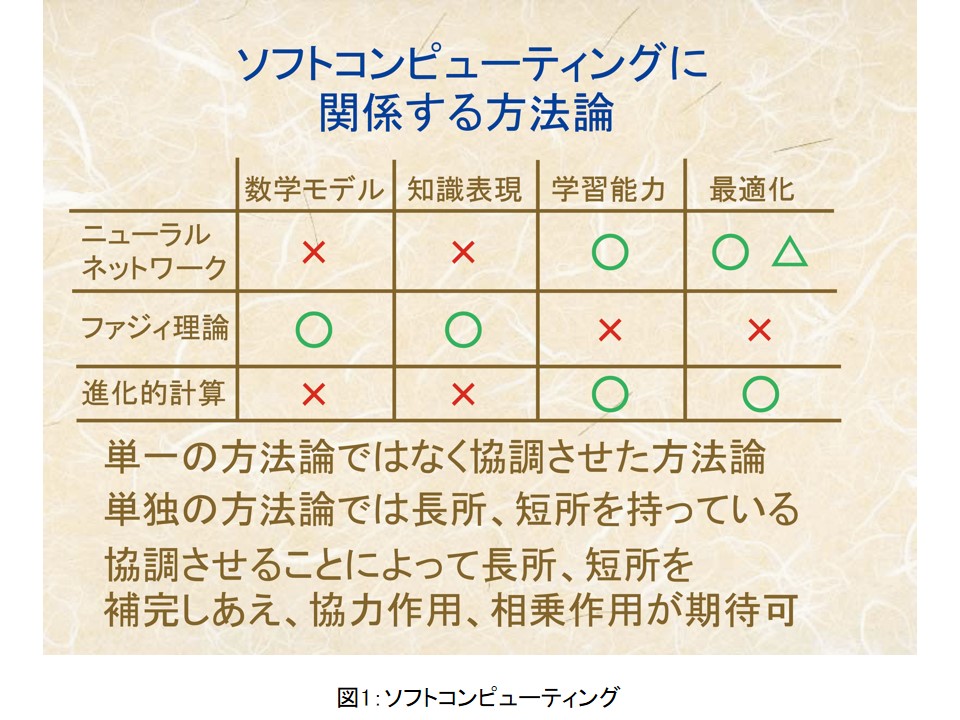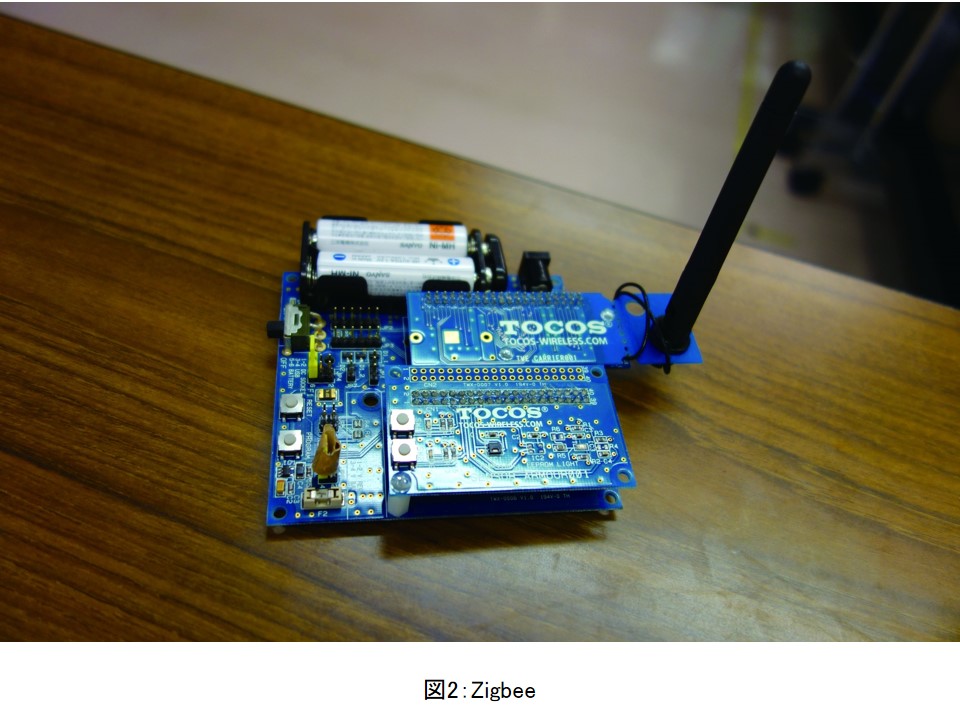キーワード:ソフトコンピューティング、知的情報処理、通信工学、災害管理、ジオセンシング
 ソフトコンピューティングに基づく知的情報処理システムに関する研究拠点形成を目標に、クラスタリング、機械・強化学習、データ解析、大規模マルチメディア情報処理、入試解析、ジオセンシング、知的制御、感性情報処理など多種多様な分野の研究者が集まり、有機的に結合した研究組織としてより本質的な新しい研究の枠組みを模索しているのが、リサーチユニット「ソフトコンピューティング」です。「ソフトコンピューティング」は、多種多様な研究分野の知見を持ち寄り、既存の手法ではなかなか解決しにくい問題を解決しようとする新しい研究分野です。
ソフトコンピューティングに基づく知的情報処理システムに関する研究拠点形成を目標に、クラスタリング、機械・強化学習、データ解析、大規模マルチメディア情報処理、入試解析、ジオセンシング、知的制御、感性情報処理など多種多様な分野の研究者が集まり、有機的に結合した研究組織としてより本質的な新しい研究の枠組みを模索しているのが、リサーチユニット「ソフトコンピューティング」です。「ソフトコンピューティング」は、多種多様な研究分野の知見を持ち寄り、既存の手法ではなかなか解決しにくい問題を解決しようとする新しい研究分野です。
ソフトウェアに関する研究分野ではない!
ソフトコンピューティングには、①曖昧(あいまい)さを許容する、②あるアプローチの短所を別のアプローチの長所で補完し、それぞれのアプローチを協調させながら使うという考えがあります。実世界の情報を正確に処理するのは非常に困難であるため、情報の正確さをある程度犠牲にして、0、1で対処しきれない問題を良い加減さ(よいかげんさ)を許容したアプローチを用いて解決していきます。さらに単独の方法ではうまく解決しない問題をいくつかの手法の長所を利用して解決していく枠組みがソフトコンピューティングです(図1)。人間の感覚に近い結果を出そうとしています。

ZigBeeとソフトコンピューティングで救命戦略立案
日本とインドネシアは世界有数の地震発生国ですので、2国が協力して地震発生後の人的被害状況の時空間的な把握に力を入れています。特に、地震が起こって通信網が遮断された際に省バッテリーの通信装置ZigBee*1 (ジグビー:図2)をいくつかつなげ、ソフトコンピューティングを用いて被害を最小限にくい止めるといった救命戦略立案、例えば非常用食料、水などをどれだけどこに送れば良いのかの立案、を行っています。また、動的な人的被害の推定問題として定式化を行い、被害状況の把握をするためのアプローチ方法を開発しています。
*1:短距離無線通信規格の一つ。通信距離はおよそ100m。

社会への貢献・実績
● 共同研究:知的設計器による回路設計支援システムに関する研究
● 共同研究:オンライン辞書を利用した学習支援に関する研究
● the 5th Int’l Symposium on Computational Intelligence and Industrial Applicationsの企画
● 第8回筑波大学ソフトコンピューティングセミナー開催
(取材:平成25年7月31日)
Problem-Solving by Approaches with Tolerance of Ambiguity/Fuzziness
Key words: Soft computing, intelligent information processing, communication engineering, disaster control, geo-sensing
The research unit “Soft Computing” aims to serve as a research basis for intelligent information processing systems based on soft computing, and consists of researcher members from a variety of fields including clustering, machine/reinforcement learning, data analysis, large-scale multi-media information processing, analyses of entrance examinations, geo-sensing, intelligent control, and Kansei information processing. As an organized research institution, our research unit tries to develop new and more essential frameworks for research problems. “Soft computing” is a new research field designed to integrate findings from a variety of research fields to address problems that cannot be easily solved by existing conventional methods.
processing. As an organized research institution, our research unit tries to develop new and more essential frameworks for research problems. “Soft computing” is a new research field designed to integrate findings from a variety of research fields to address problems that cannot be easily solved by existing conventional methods.
Although soft computing has soft in its name this is quite different from the field of software research
Soft computing: 1) is tolerant of ambiguity/fuzziness in solving research problems, and 2) is based on the idea that different approaches are used while facilitating their collaboration by compensating for the disadvantages of one approach with the advantages of another. Since it is very difficult to accurately process every piece of information in real life, the soft computing approach sacrifices the accuracy of information to some extent, and tolerates of ambiguity/fuzziness to address problems that cannot be solved by a crisp approach using only 0 and 1. The framework of soft computing combines the advantages of multiple methods to solve problems that cannot be solved by a single method (Figure 1). Soft computing is designed to obtain results in the almost same manner as humans do using their senses.
Development of emergency strategies using ZigBee and soft computing
As both Japan and Indonesia are known as earthquake-prone countries in the world, they are cooperating with each other to estimate the status of human damage following an earthquake in terms of time and space. In particular, the research unit tries to develop emergency strategies to minimize damage in the case of the failure of communication systems due to earthquakes, whereby multiple ZigBees*1 (Figure 2), low-battery-consumption communication equipment, are connected with each other based on soft computing, which provides information on the amounts of emergency provisions and water to be distributed and their destinations. The research unit is also involved in the development of approaches for estimation problems such as the recognition of damage, and the formulation of dynamic human damage.

Figure 2: Zigbee
*1: A short-range wireless communication standard. The communication distance is 100 meters.
Social contributions and achievements
● Collaborative study: Study on learning support using online dictionaries
● The 5th International Symposium on Computational Intelligence and Industrial Applications
● The 8th Soft Computing Seminar in the University of Tsukuba

